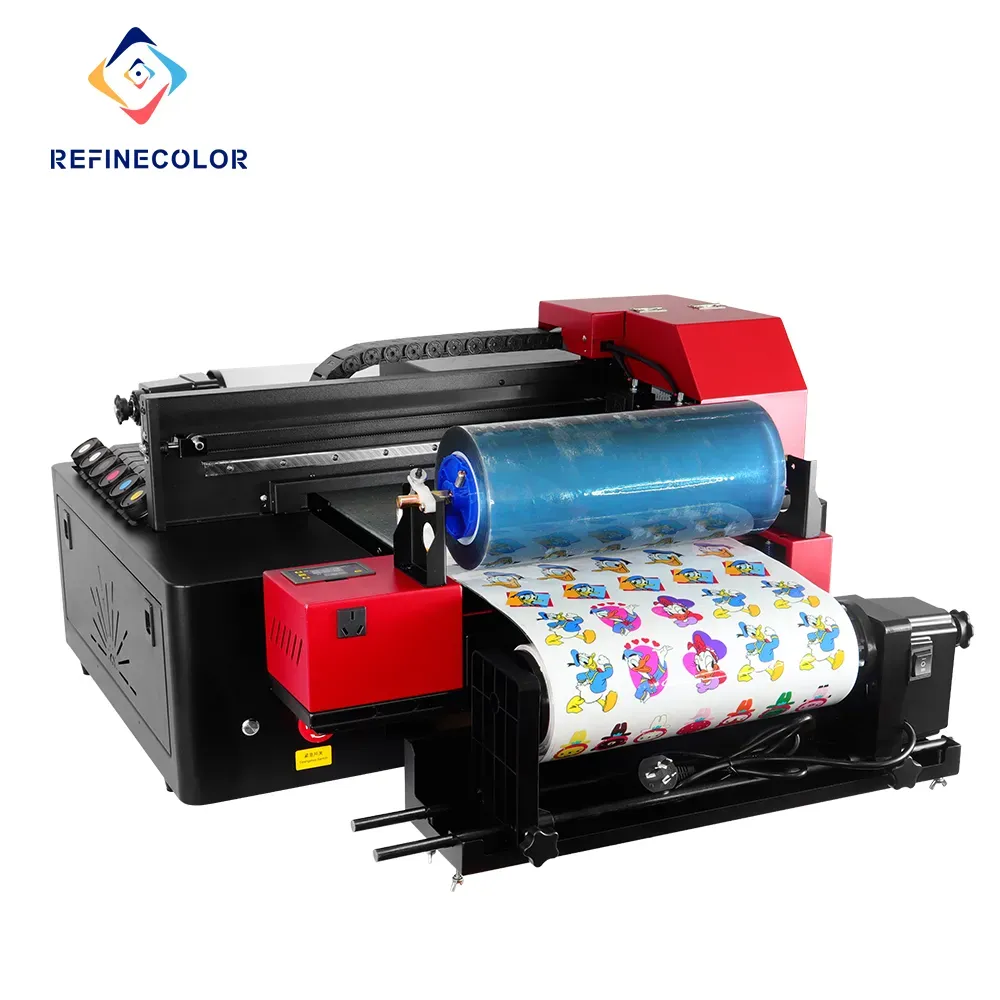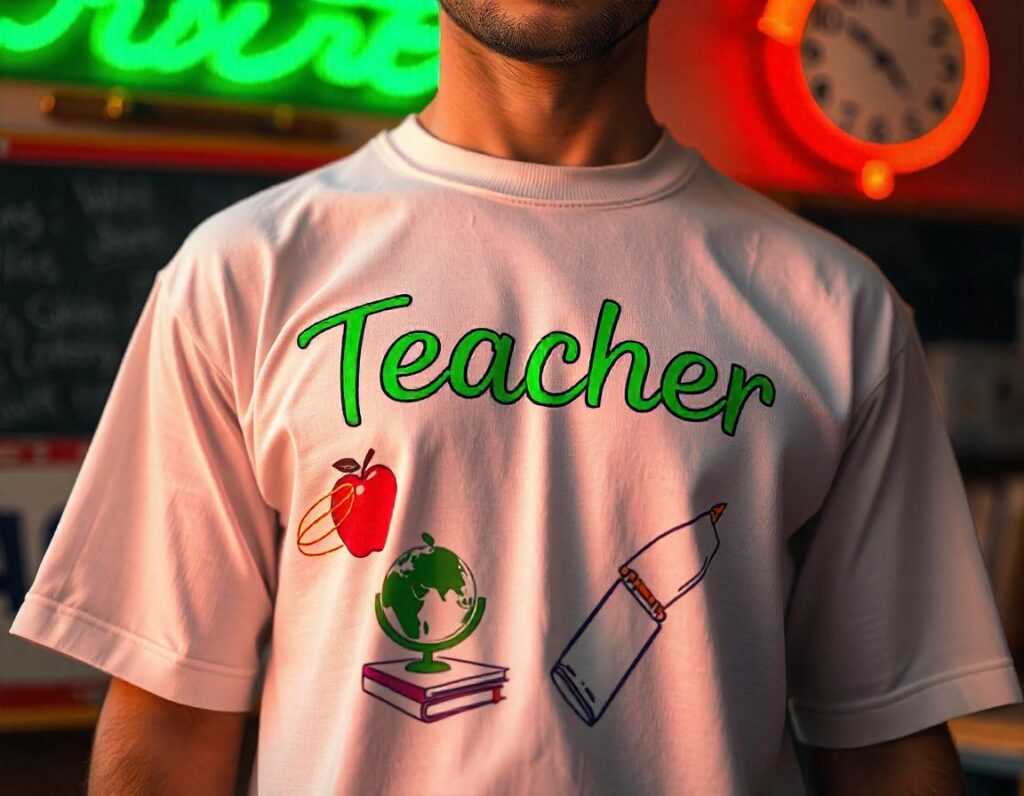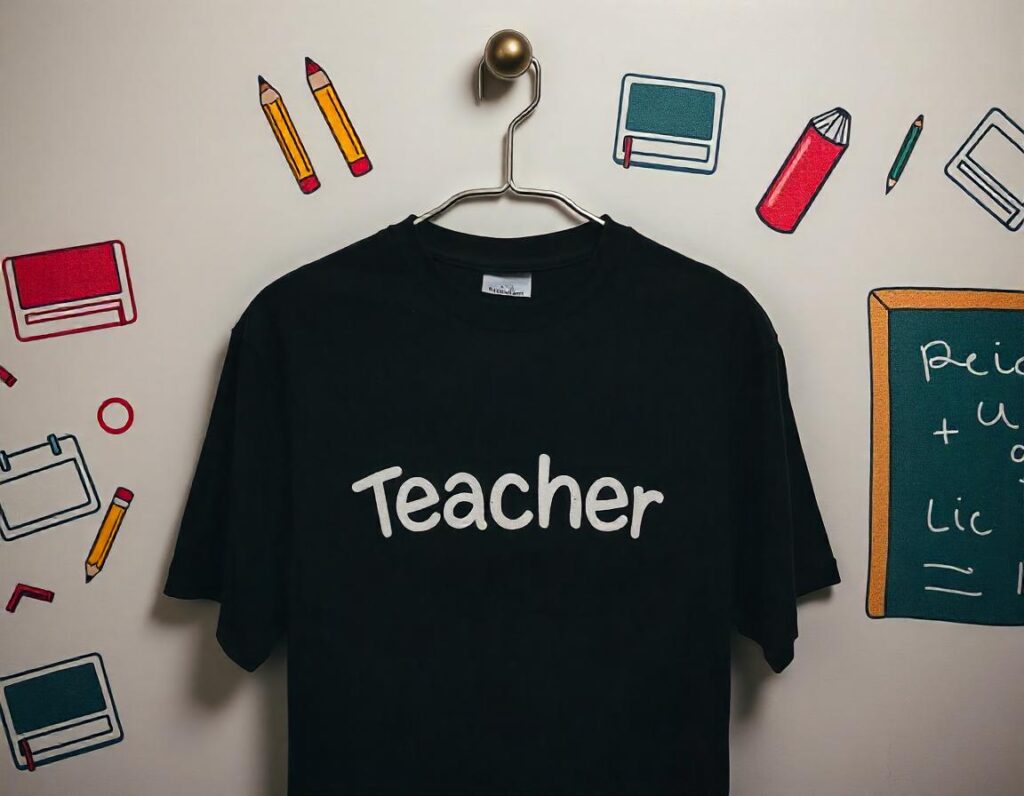UV DTF, or UV Direct-To-Film technology, is rapidly transforming the printing landscape by delivering vibrant prints that stand the test of time. This cutting-edge UV printing technology uniquely combines the benefits of traditional DTF methods with the advanced curing capabilities of UV light, ensuring stunning color fidelity and exceptional durability. As printers evolve, the innovations from industry leaders like EufyMake are illustrating just how versatile UV DTF can be across a wide array of applications—from fashion to signage. With a commitment to sustainability, this method also reduces harmful emissions, making it a responsible choice for conscious consumers. Dive into the world of UV DTF and discover how it can elevate your printing projects with a brightness and longevity that exceeds expectations.
Exploring the realm of UV Direct-To-Film printing unveils a plethora of possibilities for artists and businesses alike. Often referred to as UV printing or DTF technology, this innovative technique allows for the application of vibrant inks directly onto a film substrate, resulting in prints that boast both eye-catching aesthetics and robust durability. This method stands out for its ability to create rich color outputs while avoiding the common pitfalls of color fading and substrate limitations associated with traditional printing practices. Moreover, the emergence of tools such as the EufyMake 3D texture printer broadens functionality, making it easier than ever to craft unique, textured designs. As the demand for high-quality prints continues to soar, embracing these advanced technologies ensures that creators can push the boundaries of their artistic visions.
Exploring the Benefits of UV DTF Technology
UV DTF technology brings numerous benefits to the printing landscape, significantly enhancing the quality and longevity of printed materials. One of the standout features is its ability to produce vibrant prints that capture attention. The unique formulation of UV inks not only ensures exceptional color depth but also improves opacity, allowing for detailed designs on a variety of substrates. Brands can now convey their messages more effectively through visually striking prints, contributing to more engaging consumer experiences.
Beyond aesthetics, durability is key when considering printing solutions. UV DTF technology excels in creating prints that resist scratches, fading, and wear, making them suitable for both everyday use and long-term applications. With businesses increasingly seeking solutions that provide both quality and endurance, UV DTF stands out as a reliable option for high-demand environments, ensuring that promotional materials and personalized items retain their appeal over time.
UV DTF vs. Traditional Printing Methods
When comparing UV DTF technology to traditional printing methods, several advantages become apparent. Traditional printing often relies on heat transfer or water-based inks, which can lead to limitations in color fidelity and substrate compatibility. In contrast, UV DTF leverages the power of UV light to cure inks directly onto specially treated film, resulting in prints that do not just look better but also perform better across diverse applications. This innovation broadens the scope of possibilities for creative and functional use cases in various industries.
Furthermore, the efficiency of UV DTF printing cannot be overlooked. The curing process facilitated by UV light dramatically reduces drying times compared to conventional ink methods. This expedited workflow allows companies to meet tight deadlines and manage larger volumes of orders without compromising quality. As businesses strive to stay competitive in fast-paced markets, the speed and versatility of UV DTF printing present a compelling case for its adoption over traditional methods.
Innovative Developments in UV DTF Technology
The landscape of UV DTF technology is continuously evolving, with companies like EufyMake leading the charge in innovative advancements. One of the most notable developments is the introduction of the EufyMake UV Printer E1—a groundbreaking device capable of producing 3D textures along with vibrant graphics. This level of innovation opens exciting new avenues for artists and designers alike, allowing for the creation of multi-dimensional designs that stand out in a crowded marketplace.
Additionally, collaborations and advancements in technology are bringing forth solutions that enhance both efficiency and output quality. Businesses such as Insta Graphic Systems have recently unveiled new DTF heat transfer products, designed to provide users with even richer colors and greater durability. As these technologies progress, they pave the way for high-quality printing solutions that meet the growing demands of various segments, from fashion to industrial applications.
The Versatility of UV DTF Printing Across Industries
One of the most compelling advantages of UV DTF printing is its unparalleled versatility across different industries. Whether it’s producing unique promotional products, creating eye-catching signage, or crafting customized apparel, UV DTF technology adapts seamlessly to a wide range of substrates, including fabric, plastic, and metal. This flexibility empowers businesses to explore creative avenues and expand their product offerings, catering to diverse consumer preferences.
Moreover, the capability to print on unconventional materials gives brands a competitive edge in their markets. Retailers and marketers can leverage this adaptability to create bespoke items that resonate with their target audience, significantly enhancing their marketability. As consumer demand for personalized and versatile products continues to rise, UV DTF printing stands at the forefront, providing solutions that meet both creative and practical needs.
Understanding the Workflow of UV DTF Printing
To appreciate the full potential of UV DTF technology, it’s important to understand the workflow involved in producing high-quality prints. The process begins with the creation of digital artwork, which must be designed with the final substrate in mind. Following this, the artwork is printed onto a UV-sensitive film using specialized inks. This stage showcases the efficiency of UV DTF printing, where precision and color accuracy are prioritized to ensure the best possible output.
Once the printing is complete, the crucial curing stage utilizes UV light to solidify the inks, transforming them into durable, wear-resistant prints. This step is vital, as it determines the longevity and quality of the finished product. Finally, depending on the desired application, the cured designs can either be heat transferred onto various surfaces or used as standalone applications. This streamlined workflow not only enhances the creative possibilities but also maximizes production efficiency.
Sustainability in UV DTF Printing
As the printing industry increasingly turns its attention to environmental considerations, UV DTF printing emerges as a frontrunner in sustainable practices. Unlike many traditional printing methods that utilize solvent inks known for their high levels of volatile organic compounds (VOCs), UV DTF technology utilizes inks that emit significantly lower VOCs. This attribute makes it a more eco-friendly choice, aligning with the growing consumer demand for sustainable production practices.
Moreover, the longevity of UV DTF prints contributes to sustainability efforts by reducing waste generated from fading or damaged materials. Since these prints hold their color and integrity over time, there is less need for replacement, which directly impacts resource consumption. As businesses seek to bolster their green credentials, adopting technologies like UV DTF printing not only enhances their product offerings but also reflects a commitment to environmental responsibility.
Frequently Asked Questions
What is UV DTF and how does it differ from traditional printing methods?
UV DTF, or UV Direct-To-Film printing, combines the best aspects of UV printing technology and traditional DTF methods. Unlike conventional printing that uses heat transfer or water-based inks—which could lead to fading—UV DTF employs UV light to cure inks directly on the film, resulting in vibrant prints that are highly durable on various substrates.
What are the advantages of using UV DTF technology for vibrant prints?
The primary advantages of UV DTF technology include stunningly vibrant color outputs and remarkable durability. The specially formulated UV inks ensure high opacity and rich colors that do not fade, making UV DTF ideal for fabrics, plastics, and metals, and retaining their quality even after regular wear.
Is UV DTF printing suitable for various substrates?
Yes, UV DTF printing is incredibly versatile and effective across a wide range of substrates. From fashion apparel and promotional items to signage and artwork, UV DTF technology, especially in products like the EufyMake printer, is designed for compatibility with almost any surface.
How does the curing process in UV DTF improve print durability?
In UV DTF printing, the curing process involves exposing printed inks to UV light, which triggers a solidification reaction. This ensures that the prints are highly resistant to scratches, fading, and environmental damage, providing long-lasting results that are perfect for items subjected to regular use.
What makes the EufyMake printer a revolutionary option in UV DTF technology?
The EufyMake UV Printer E1 is considered revolutionary because it is the world’s first personal 3D-texture UV printer. This innovative machine adds a dimension of creativity by allowing users to print intricate 3D textures while maintaining the versatility to print on diverse surfaces, marrying functionality with artistic potential.
How does UV DTF technology contribute to environmental sustainability in printing?
UV DTF technology is an environmentally friendly printing option because it utilizes inks that emit fewer volatile organic compounds (VOCs) compared to traditional solvent inks. As sustainability becomes increasingly important, UV DTF printing aligns with eco-conscious practices in modern production methods.
| Key Points | Details |
|---|---|
| Introduction to UV DTF Technology | UV DTF combines UV printing with traditional DTF methods, curing inks directly onto the film for vibrant and durable prints. |
| Vibrant Color Outputs | Produces stunningly vibrant prints, working well on various surfaces like fabrics and metals. |
| Durability | Highly resistant to scratches and fading, making it ideal for long-lasting applications. |
| Versatility | Can print on a wide range of substrates, catering to different industries and applications. |
| Speed and Efficiency | Faster than traditional methods due to minimized drying times, enhancing production efficiency. |
| Environmental Impact | Emits fewer VOCs, making it a more eco-friendly option compared to traditional printing methods. |
| Recent Developments | Innovations from companies like Insta Graphic Systems and EufyMake are advancing UV DTF products which enhance print quality and creativity. |
| How UV DTF Works | Involves design creation, printing with UV inks, curing with UV light, and transferring to substrates, enabling customization and intricate designs. |
Summary
UV DTF technology is redefining the printing landscape by offering strikingly vibrant and durable prints essential for various applications. This process, which combines advanced UV methods with the versatility of Direct-To-Film printing, allows for eye-catching outputs across multiple surfaces. Its benefits, including rapid production speeds, environmentally-friendly inks, and resistance to wear, make it a must-consider option for both professionals and enthusiasts. As innovations continue to emerge in UV DTF technology, we are likely to witness further enhancements, ensuring that users can continue to explore their creativity with sustained quality and color vibrancy.



